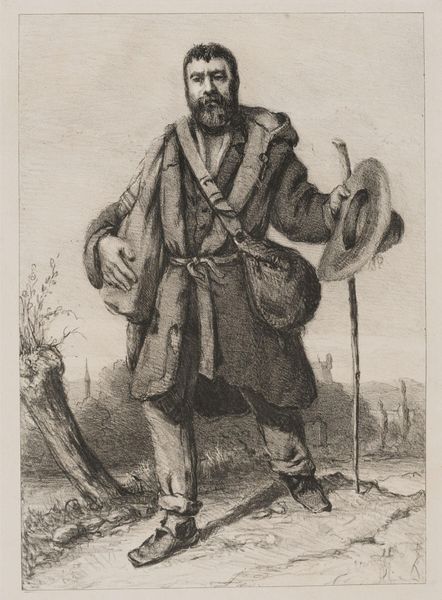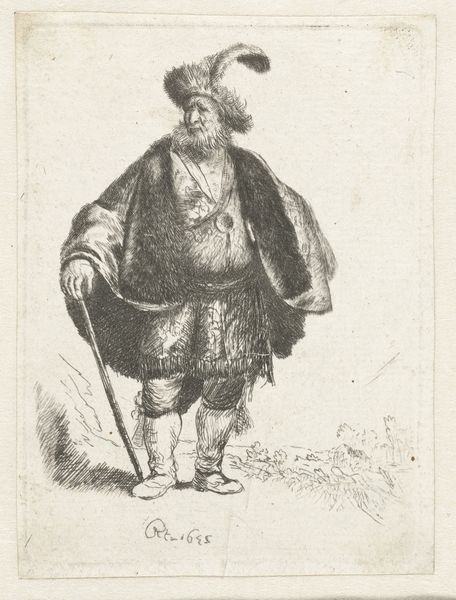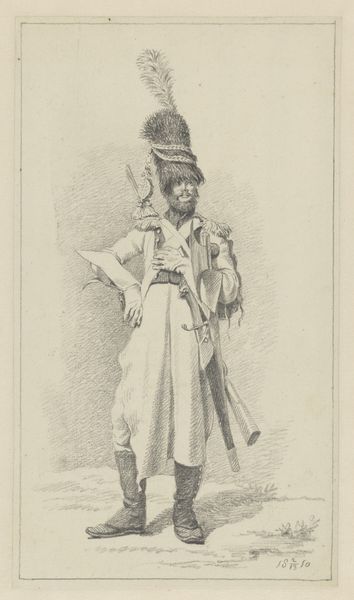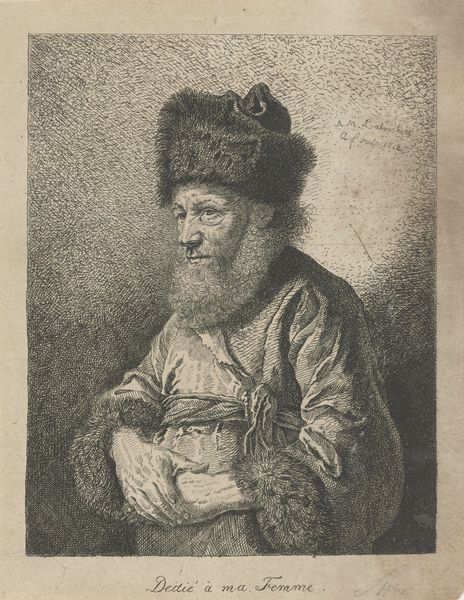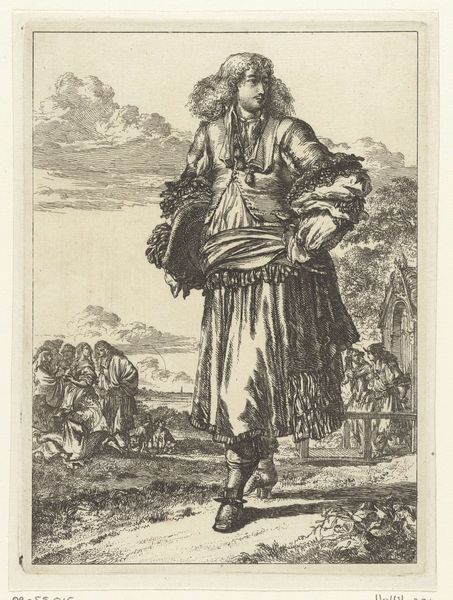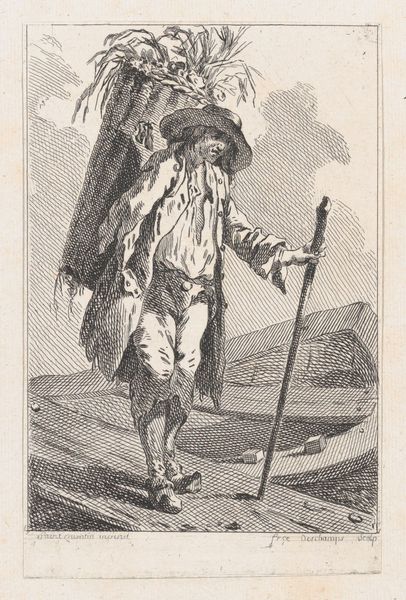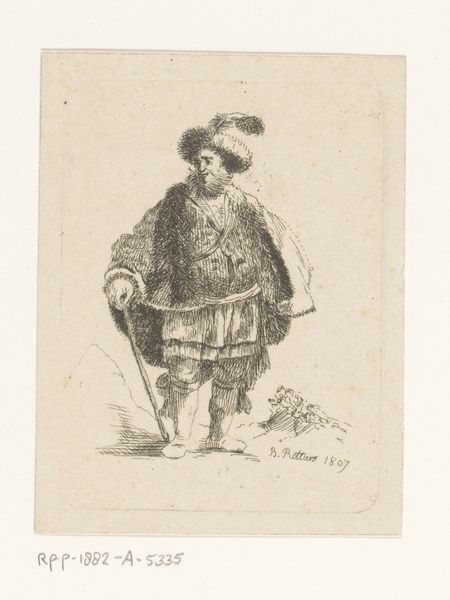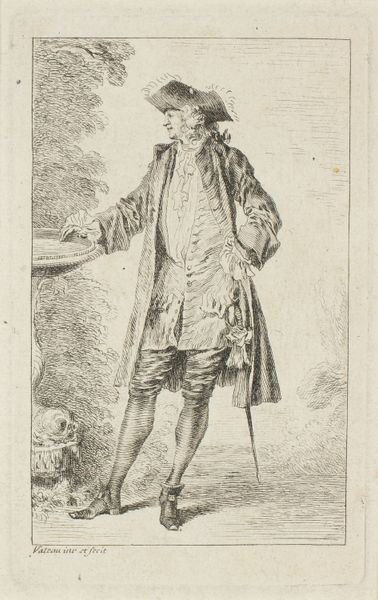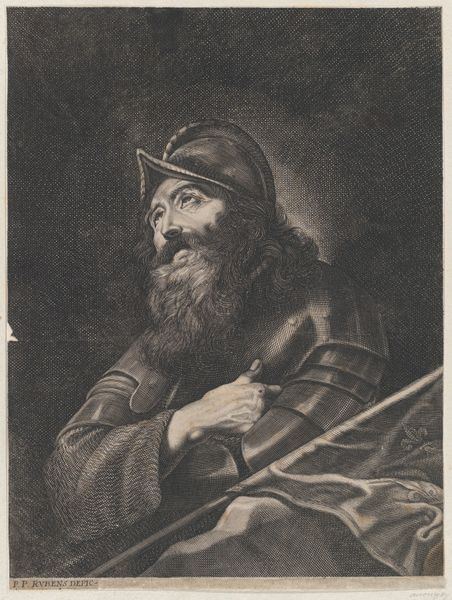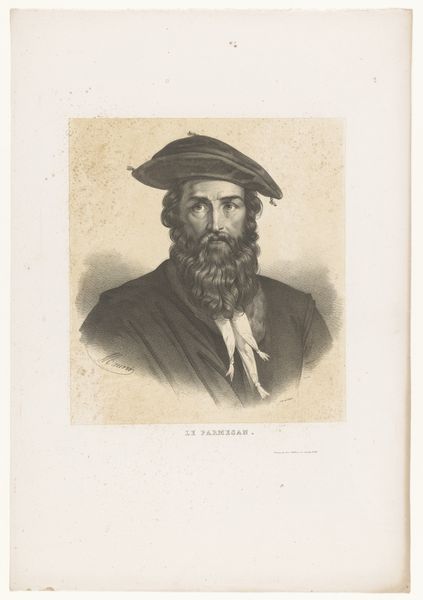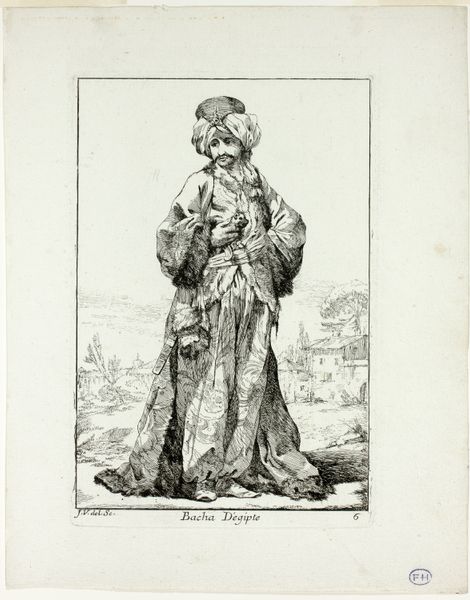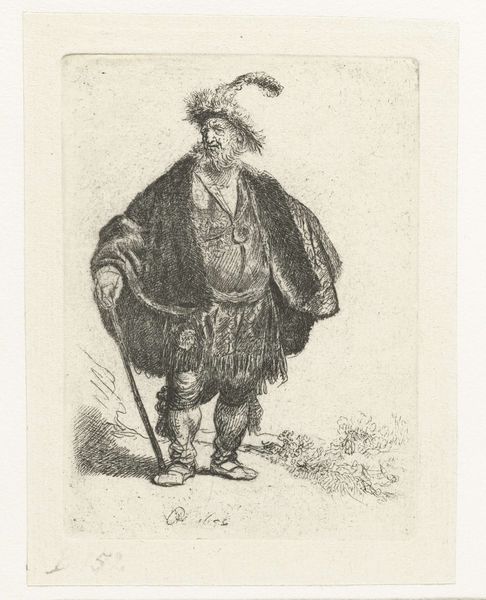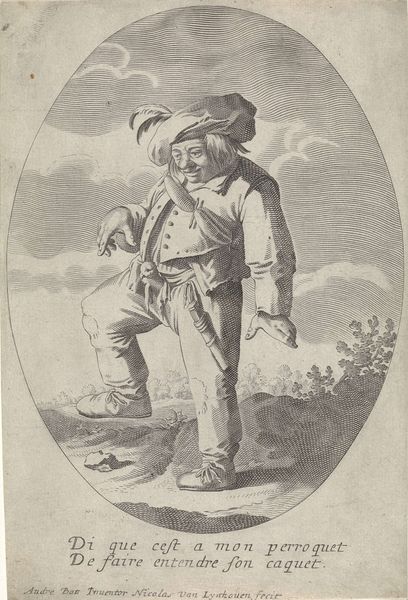
print, engraving
#
portrait
# print
#
old engraving style
#
figuration
#
portrait drawing
#
history-painting
#
engraving
#
realism
Dimensions: height 217 mm, width 150 mm
Copyright: Rijks Museum: Open Domain
Editor: Here we have Pieter Bartholomeusz. Barbiers’ "Soldaat met bijl (Sappeur)", a print from sometime between 1809 and 1837. I find the engraving's stark contrast particularly striking, and the cross-hatching really gives a sense of texture, especially in the soldier’s fur hat. What stands out to you when you look at this piece? Curator: Indeed, the use of engraving to create textural effects is quite masterful here. Notice how the density of the lines varies to define form and create shadow. It is this meticulous orchestration of line that brings volume to the figure, wouldn't you agree? Consider the angle of the lines in the hat, compared to the cloak, how do they differ? Editor: Absolutely, the differing densities and angles really do bring the image to life. And now that I'm looking closer, the consistent orientation of the lines forming his face emphasize the contour of his bone structure! It's almost like a topographical map. Curator: Precisely! Observe also the careful balance between the dark areas and the lighter, unworked paper. This distribution creates a visual rhythm, guiding the viewer's eye across the composition. The contrast makes the composition all the more potent, does it not? Editor: It certainly does! It’s amazing how much depth and detail can be achieved with such a seemingly simple technique. I had not considered how purposeful and fundamental that balance of light and dark is. Curator: A formal analysis allows us to dissect the mechanics by which the engraving becomes visually eloquent, creating meaning by visual cues that operate in isolation from historical and social interpretation. A valuable exercise!
Comments
No comments
Be the first to comment and join the conversation on the ultimate creative platform.
